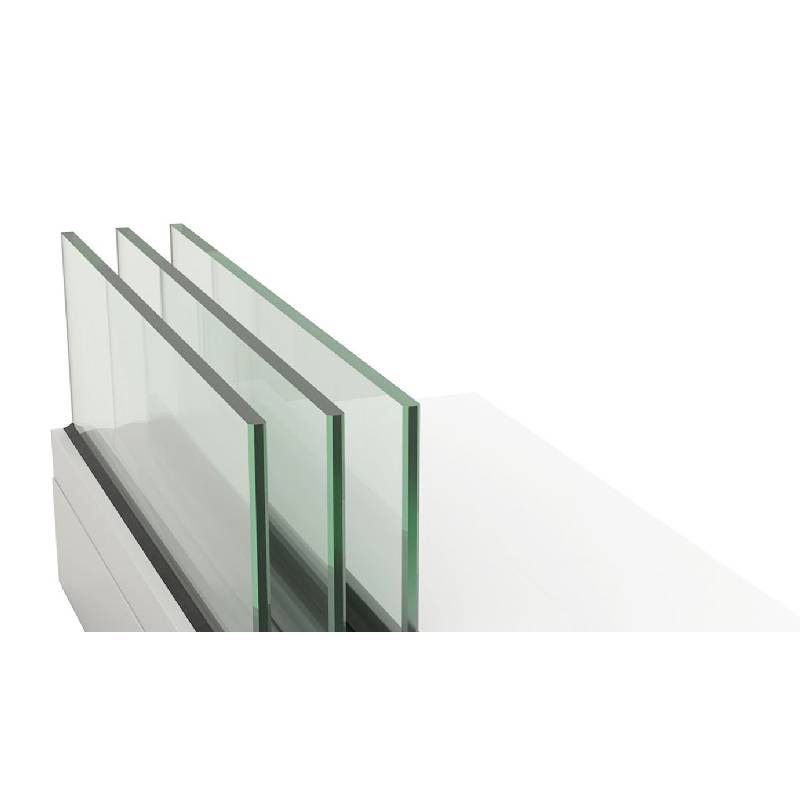The Versatile World of Float Glass Types
Float glass, a type of flat glass manufactured by floating molten glass on a bed of molten metal, typically tin, to create a uniform thickness, is pivotal in various industries. Its versatility stems from the different types tailored for specific applications, each with unique properties and benefits.
The most common type is the clear float glass, known for its transparency and clarity. It is the workhorse of the construction industry, used in windows, doors, and skylights, allowing natural light to flood interior spaces. This type offers not only visual aesthetics but also energy efficiency when combined with insulating layers.
For more stringent requirements, tempered float glass provides enhanced durability. Through a heating and rapid cooling process, it is strengthened to withstand impact and reduce the risk of breakage into sharp pieces. This makes it ideal for hazard-prone areas such as shower screens and glass tables or in vehicles for safety.
Laminated float glass, another variant, consists of multiple layers bonded together with an interlayer, typically polyvinyl butyral. Even when fractured, the glass adheres to the interlayer, preventing dangerous shards from dispersing—a characteristic that has earned it a place in windshields and protective barriers Even when fractured, the glass adheres to the interlayer, preventing dangerous shards from dispersing—a characteristic that has earned it a place in windshields and protective barriers

Even when fractured, the glass adheres to the interlayer, preventing dangerous shards from dispersing—a characteristic that has earned it a place in windshields and protective barriers Even when fractured, the glass adheres to the interlayer, preventing dangerous shards from dispersing—a characteristic that has earned it a place in windshields and protective barriers
 types of float glass
types of float glass.
Solar-control float glass incorporates coatings that reflect solar radiation, reducing heat transmission into buildings. This type is particularly beneficial in warm climates or south-facing structures, contributing to energy savings on air conditioning.
Privacy glass, often textured or patterned, ensures a level of opacity while still allowing light transmission. Ideal for bathrooms, offices, and partitions, it balances the need for natural illumination with a desire for visual privacy.
Finally, low-emissivity (Low-E) float glass boasts a microscopic coating that reflects heat back into a building while allowing light in. This feature makes it an excellent choice for energy-conscious designs, as it helps maintain indoor temperature without compromising on daylight.
Each type of float glass plays a crucial role in our built environment, improving safety, efficiency, and aesthetics. From the transparent expanses of clear glass to the specialized functions of solar control and privacy glass, these materials continue to shape the modern world with their strength, adaptability, and beauty.


 Even when fractured, the glass adheres to the interlayer, preventing dangerous shards from dispersing—a characteristic that has earned it a place in windshields and protective barriers Even when fractured, the glass adheres to the interlayer, preventing dangerous shards from dispersing—a characteristic that has earned it a place in windshields and protective barriers
Even when fractured, the glass adheres to the interlayer, preventing dangerous shards from dispersing—a characteristic that has earned it a place in windshields and protective barriers Even when fractured, the glass adheres to the interlayer, preventing dangerous shards from dispersing—a characteristic that has earned it a place in windshields and protective barriers types of float glass.
Solar-control float glass incorporates coatings that reflect solar radiation, reducing heat transmission into buildings. This type is particularly beneficial in warm climates or south-facing structures, contributing to energy savings on air conditioning.
Privacy glass, often textured or patterned, ensures a level of opacity while still allowing light transmission. Ideal for bathrooms, offices, and partitions, it balances the need for natural illumination with a desire for visual privacy.
Finally, low-emissivity (Low-E) float glass boasts a microscopic coating that reflects heat back into a building while allowing light in. This feature makes it an excellent choice for energy-conscious designs, as it helps maintain indoor temperature without compromising on daylight.
Each type of float glass plays a crucial role in our built environment, improving safety, efficiency, and aesthetics. From the transparent expanses of clear glass to the specialized functions of solar control and privacy glass, these materials continue to shape the modern world with their strength, adaptability, and beauty.
types of float glass.
Solar-control float glass incorporates coatings that reflect solar radiation, reducing heat transmission into buildings. This type is particularly beneficial in warm climates or south-facing structures, contributing to energy savings on air conditioning.
Privacy glass, often textured or patterned, ensures a level of opacity while still allowing light transmission. Ideal for bathrooms, offices, and partitions, it balances the need for natural illumination with a desire for visual privacy.
Finally, low-emissivity (Low-E) float glass boasts a microscopic coating that reflects heat back into a building while allowing light in. This feature makes it an excellent choice for energy-conscious designs, as it helps maintain indoor temperature without compromising on daylight.
Each type of float glass plays a crucial role in our built environment, improving safety, efficiency, and aesthetics. From the transparent expanses of clear glass to the specialized functions of solar control and privacy glass, these materials continue to shape the modern world with their strength, adaptability, and beauty.